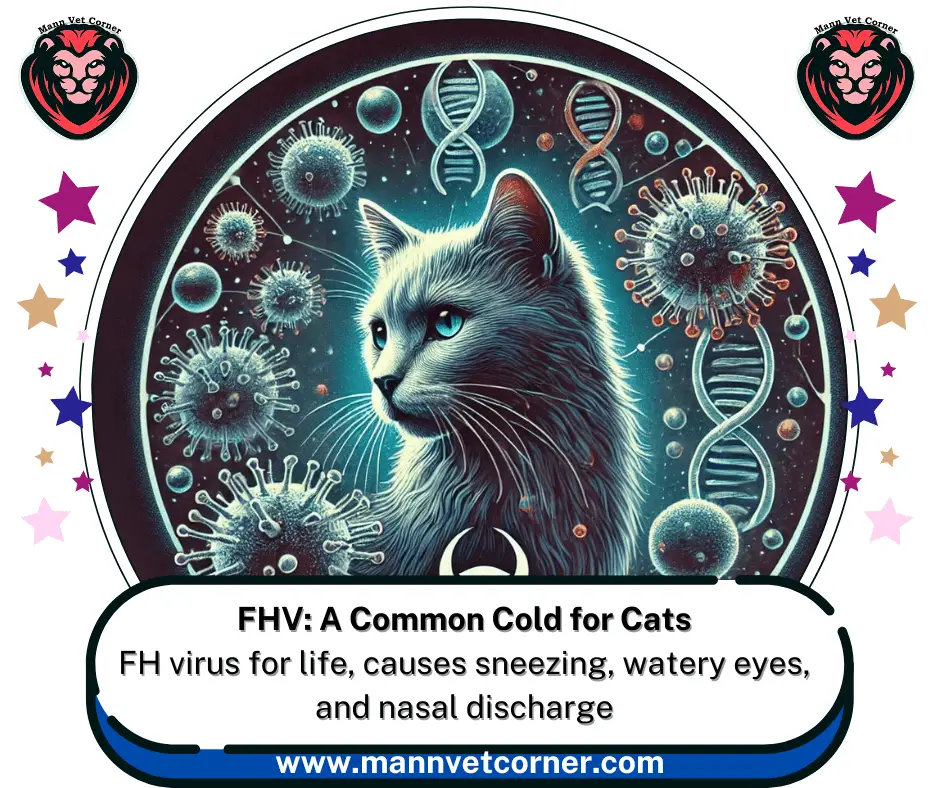Feline Herpesvirus (FHV), also known as feline viral rhinotracheitis (FVR), is one of the most common causes of upper respiratory infections in cats. Often referred to as the “common cold” of the feline world, FHV is highly contagious and can lead to significant discomfort and health complications for infected cats. This guide provides a detailed overview of FHV, including its causes, symptoms, transmission, diagnosis, treatment, and prevention, to help cat owners better understand and manage this prevalent virus.
What is Feline Herpesvirus (FHV)?
Feline Herpesvirus is a highly contagious DNA virus that primarily affects the upper respiratory tract, eyes, and nasal passages of cats. It is a leading cause of feline upper respiratory infections (URI) and is especially problematic in multi-cat environments like shelters, catteries, and rescue centers. Once a cat is infected, the virus remains in their body for life, often reactivating during periods of stress or illness.
How is FHV Transmitted?
FHV spreads easily through direct and indirect contact with infected cats. Common modes of transmission include:
- Direct contact: Saliva, nasal secretions, or eye discharge from an infected cat.
- Airborne droplets: Sneezing or coughing can release the virus into the air.
- Contaminated objects: Shared food bowls, litter boxes, bedding, or toys can harbor the virus.
- Stress-induced shedding: Cats carrying the virus may shed it during periods of stress, even if they show no symptoms.
Symptoms of FHV: Recognizing the Signs
FHV primarily affects the respiratory system and eyes, causing symptoms that resemble a cold. Common signs include:
- Sneezing and nasal discharge: Often thick and mucus-like, sometimes with blood.
- Conjunctivitis: Red, swollen, and watery eyes, sometimes with discharge.
- Eye ulcers: Painful sores on the cornea that can lead to vision problems.
- Fever and lethargy: Infected cats may become lethargic and lose their appetite.
- Oral ulcers: Sores in the mouth, leading to drooling or difficulty eating.
- Squinting or eye rubbing: Due to discomfort or irritation.
In severe cases, FHV can lead to pneumonia, especially in kittens, senior cats, or those with weakened immune systems.
Diagnosis: Confirming FHV Infection
Veterinarians diagnose FHV based on clinical signs and laboratory tests, including:
- PCR Testing: Detects viral DNA in nasal or eye swabs.
- Virus Isolation: Identifies the virus in cell cultures.
- Fluorescein Staining: Checks for corneal ulcers or damage.
Treatment and Management: Helping Your Cat Recover
While there is no cure for FHV, supportive care can alleviate symptoms and improve your cat’s quality of life. Treatment options include:
- Antiviral medications: Drugs like famciclovir can reduce viral replication.
- Eye drops or ointments: To treat conjunctivitis or corneal ulcers.
- Antibiotics: For secondary bacterial infections.
- Hydration and nutrition: Ensure your cat stays hydrated and eats well.
- Humidifiers: To ease breathing and reduce nasal congestion.
- Stress reduction: Minimize stressors to prevent viral reactivation.
Prevention: Protecting Your Cat from FHV
Preventing FHV is key to keeping your cat healthy, especially in multi-cat households. Key preventive measures include:
- Vaccination: The FVRCP vaccine protects against FHV and is a core vaccine for all cats.
- Isolation: Keep infected cats away from healthy ones to prevent spread.
- Hygiene: Regularly clean and disinfect food bowls, litter boxes, and bedding.
- Stress management: Provide a calm, enriching environment to reduce stress.
Feline Herpesvirus is a common but manageable condition in cats. By understanding its causes, symptoms, and treatment options, cat owners can take proactive steps to protect their pets and minimize the impact of this virus. Vaccination, hygiene, and stress management are the cornerstones of preventing and managing FHV.
